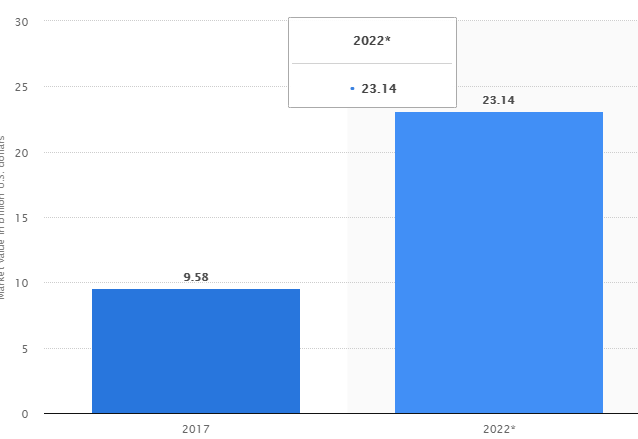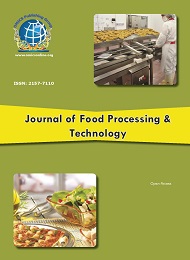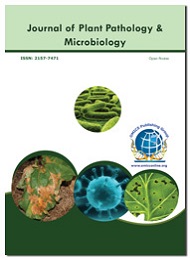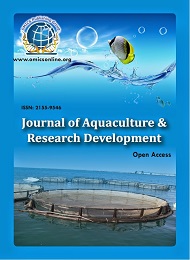Theme: Greening Agri-Food System and Aqua World Together
AFA 2019
About Conference
It is our great pleasure to invite all the scientists, professors, young researchers, business delegates and students from all over the world to attend our European Conference on Research in Agri, Food and Aqua. AFA 2019 is dedicated to incite discussions that promote innovations and fresh perspectives to the existing situation. It welcomes Professionals, Delegates, Professors, Research scholars, Agricultural Operations Manager, Animal Geneticist, Food Scientist, Agricultural Engineer, Agronomy Sales Manager, Bioinformatics Scientist, Environmental Engineer, Biochemist, Phd students and groups to be a part of it as we deliberate innovative advancements in the felid Agri, Food & Aqua. It would also provide a platform for the scientists and future aspiring researchers around the globe to indulge into a fruitful collaboration in order to create technological and innovative advancements in the field of Agri, Food & Aqua for global benefit.
Agriculture regularly places significant pressure on natural resources and the environment. Sustainable agricultural is intended to protect the environment, expand the earth’s natural resource base and improve soil fertility. Based on several aspects, sustainable agriculture seeks to increase profitable farm income, support environmental stewardship, enhance quality of life for farm families and increase production for human food and fiber needs.
It is frequently includes wide range of production practices, including conventional and organic. A regionally integrated system of plant and animal production practices are designed to give long-term results such as:
• Making of sufficient human food, feed, fiber, and fuel to meet the needs of an orderly rising population
• Protection of the environment and expanding of the natural resources supply
• Sustainment of the economic viability of agriculture methods
Plant Fertilization and Protection
Plant fertilization is the union of male and female gametes to produce a zygote. So, how does fertilization occur? It's a pretty straight-forward process that's similar for both flowering plants (angiosperms) and seed-bearing plants (gymnosperms). Let's break the fertilization process down into four steps. Pollination: In general, male gametes are contained in pollen, which is carried by wind, water, or wildlife (both insects and animals) to reach female gametes. The pollen is deposited on a plant's stigma, which is part of the pistil (the elongated part of a flower extending from the ovary). This process is called pollination. Germination: Within a few minutes, pollen tubes begin growing, or germinating, toward the egg cell. These tubes will provide a path for the sperm carried in the pollen to reach the egg. Penetration of the Ovule: The pollen tubes penetrate the ovule, which contains the female gametes. Fertilization: Sperm travel down the pollen tubes and fertilize an egg. Most angiosperms undergo double fertilization, where both an egg and the polar nuclei in the embryonic sac are fertilized. Plant protection is the science and practice of managing pests, diseases and weeds that damage crops and other plants, and which can have a devastating effect on farmer livelihoods.
Postharvest Physiology and Technology
Postharvest physiology deals with the time period from harvest or removal of the plant from its normal growing environment to the time of ultimate utilization, deterioration, or death. Roles of a Postharvest Physiologist: To minimize the postharvest loss of horticultural products and maintain market, nutritional value and safety of the product by using postharvest technology that mitigates the postharvest deterioration of the product.
Postharvest technologies constitutes an inter disciplinary science and techniques applied to agriculture commodities after harvest for the purpose of preservation, conservation, quality control/enhancement, processing, packaging, storage, distribution, marketing and utilization to meet the food and nutritional requirements of consumers in relation to their needs.
Seed science is the study of the structure and development of seeds from the moment of fertilization of the egg cell on the maternal plant until formation of a new plant from the seed. Seed science is divided into two sections carpology, studies the seeds and fruits of wild plants, and the other section studies the seeds of cultivated plants. Seed science is the theoretical basis of seed growing. Agricultural seed science also elaborates methods of evaluating and controlling seed material. The science is closely connected with botany, biochemistry, genetics, and other biological sciences. Seed Technology is a body of knowledge which deals on production, handling and storage of seeds.
Soil science deals with soil as a natural resource on the surface of the earth including soil formation, classification and mapping; physical, chemical, biological, and fertility properties of soils per se; and these properties in relation to the use and management of soils.
Sometimes terms which refer to branches of soil science, such as pedology (formation, chemistry, morphology and classification of soil) and edaphology (influence of soil on organisms, especially plants), are used as if synonymous with soil science. Indeed, engineers, agronomists, chemists, geologists, geographers, biologists, microbiologists, silviculturists, sanitarians, archaeologists, and specialists in regional planning, all contribute to further knowledge of soils and the advancement of the soil sciences.
Food Processing and Packaging Technologies
Food Processing is the set of methods and techniques are used to transform raw ingredients into food or to transfer food into other forms for consumption by humans or animals either in the home or by the food processing industry. Food processing typically takes clean, harvested crops or slaughtered and butchered animal products and uses these to produce attractive, marketable and often long-life food products. Food Processing methods are peeling, mincing, chopping or slicing, emulsification, fermentation, liquefaction, baking and packaging.
Food Packaging provides protection, tampering resistance, and special physical, chemical, or biological needs. It may bear a nutrition facts label and other information about food being offered for sale. Packaging preservers food and prolongs it shelf life by protecting it from bacterial damage, moisture and insect attack. Some packages preserves food for a very long time, such as tins.
Organic agriculture is a holistic production management system which promotes and enhances agro-ecosystem health, including biodiversity, biological cycles, and soil biological activity. It emphasises the use of management practices in preference to the use of off-farm inputs, taking into account that regional conditions require locally adapted systems. This is accomplished by using, where possible, agronomic, biological, and mechanical methods, as opposed to using synthetic materials, to fulfil any specific function within the system. Organic agriculture systems and products are not always certified and are referred to as "non-certified organic agriculture or products". This excludes agriculture systems that do not use synthetic inputs by default.
Weed Science is the study of vegetation management in agriculture, aquatics, horticulture, right-of-way, essentially anywhere plants need to be managed. It involves the study of all the tools available for this purpose such as cropping systems, herbicides, management techniques and seed genetics. However, it is not just the controlling of plants, but the study of these plants. This includes plant ecology, physiology, and the genetics of plants species that have been identified to have impact on the economy and our ecology. The development of knowledge of the major mechanisms of weed survival is essential for developing effective methods of weed management.
Horticulture, literally garden culture, is a part of crop agriculture that also includes agronomy and forestry. By tradition, horticulture deals with garden crops such as fruits, nuts, vegetables, culinary herbs and spices, beverage crops, and medicinal, as well as ornamental plants. Agronomy is involved with grains, pasture grasses and forages, oilseeds, fiber crops, and industrial crops such as sugarcane, while forestry is involved with trees grown for timber and fiber as well as the incidental wildlife. The edible horticultural crops are used entirely as human food and are often utilized in the living state and thus highly perishable. In contrast, edible agronomic crops are often utilized in the non-living state, are highly processed, are often used for animal feed, and usually contain a high percentage of dry matter. The precise distinction between horticultural and agronomic crops is traditional. In general, horticultural crops are intensively cultivated and warrant a large input of capital, labor, and technology per unit area of land, but in modern agriculture, horticultural crops may be extensively grown while many agronomic crops are now intensively cultivated. Many crops are claimed by more than one discipline. Horticulture is practiced in large agricultural operations, in small farm enterprises, and in home gardens.
Food science is the study of the physical, biological, and chemical makeup of food; the causes of food deterioration; and the concepts underlying food processing. Food scientists and technologists apply scientific disciplines including chemistry, engineering, microbiology, and nutrition to the study of food to improve the safety, nutrition, wholesomeness and availability of food. Depending on their area of specialization, food scientists may develop ways to process, preserve, package, and/or store food according to industry and government specifications and regulations. Food technology is the application of food science to the selection, preservation, processing, packaging, distribution, and use of safe food. Related fields include analytical chemistry, biotechnology, engineering, nutrition, quality control, and food safety management.
Global Food Loses and Food Waste
Food loss refers to any food that is lost in the supply chain between the producer and the market. This may be the result of pre-harvest problems, such as pest infestations, or problems in harvesting, handling, storage, packing or transportation. Some of the underlying causes of food loss include the inadequacy of infrastructure, markets, price mechanisms or even the lack of legal frameworks. Tomatoes crushed during transport because of improper packaging are one example of food loss. Food waste, on the other hand, refers to the discarding or alternative (non-food) use of food that is safe and nutritious for human consumption. Food is wasted in many ways: Fresh produce that deviates from what is considered optimal in terms of shape, size and color, for example is often removed from the supply chain during sorting operations. Foods that are close to, at or beyond the “best-before” date are often discarded by retailers and consumers. Large quantities of wholesome edible food are often unused or left over and discarded from household kitchens and eating establishments.
Food Biotechnology is the advanced technique of Food Processing in order to modify the genes of our food sources. Food Biotechnology is about science and genetics to improve the food we eat. We also use it to improve a wide variety of food production. Modern methods of Biotechnology like Recombinant DNA, Cell Fusion and Novel Bioprocessing are industrially commercially used. The main goal of Food Biotechnology is to produce food production, food ingredients and functional foods at the processing stage and agricultural production, genetically modified plants are used to enhance taste, shell life, nutrition and quality of food, and genetically modified food is synthesized using biotechnological tools.
Nutrition is important for everyone. Humans need a wide range of nutrients to lead a healthy and active life. However, the requirement is different for every individual may it be an infant, growing child, pregnant/lactating women and elderly people. Healthy dietary practices begin early in life. Recent evidences indicate that under nutrition in utero may set the pace for diet related chronic diseases in later life. Breastfeeding promotes healthy growth and improves cognitive development, and may have longer-term health benefits, like reducing the risk of becoming overweight or obese and developing NCDs later in life. At the core of a balanced diet are foods that are low in unnecessary fats and sugars and high in vitamins, minerals, and other nutrients. The following food groups are essential parts of a balanced diet.
• Diet for an Infant:
• Diet for a Growing Child:
• Diet for Pregnant and Lactating Mother:
• Diet for an Adult Male & Female:
• Diet for Elderly People
Aquaculture (aquafarming) Aquaculture is the process of rearing, breading and harvesting of aquatic species, both animals and plants, in controlled aquatic environments like the oceans, lakes, rivers, ponds and streams. Mariculture refers to aquaculture practiced in marine environments and in underwater habitats.
Various types of aquaculture: Mariculture, Fish farming, Algaculture.
Importance of Aquaculture: Sustainable use of sea resources, Conservation of Biodiversity, Increased Efficiency and more resources for less effort.
As global populations continue to increase, wild populations of commercially captured fish can no longer support this demand. Aquaculture provides an efficient means of protein production.
Fish stocking is the practice of raising fish in a hatchery and releasing them into a river, lake, or the ocean to supplement existing populations, or to create a population where none exists. Stocking may be done for the benefit of commercial, recreational, or tribal fishing, but may also be done to restore or increase a population of threatened or endangered fish in a body of water closed to fishing. Fish stocking may be done by governmental agencies in public waters or by private groups in private waters.
Aquaponics refers to any system that combines conventional aquaculture with hydroponics (cultivating plants in water) in a symbiotic environment. In normal aquaculture, excretions from the animals being raised can accumulate in the water, increasing toxicity. As existing hydroponic and aquaculture farming techniques form the basis for all aquaponic systems, the size, complexity, and types of foods grown in an aquaponic system can vary as much as any system found in either distinct farming discipline. Aquaponics consists of two main parts, with the aquaculture part for raising aquatic animals and the hydroponics part for growing plants. Typical components of aquaponic system include: Rearing tank, settling basin, bio filter and hydroponic subsystems
All fish carry pathogens and parasites. Usually this is at some cost to the fish. If the cost is sufficiently high, then the impacts can be characterized as a disease. What is known about fish disease often relates to aquaria fish and more recently, to farmed fish. Disease is a prime agent affecting fish mortality, especially when fish are young. Fish can limit the impacts of pathogens and parasites with behavioral or biochemical means, and such fish have reproductive advantages. Interacting factors result in low grade infection becoming fatal diseases. In particular, things that cause stress, such as natural droughts or pollution or predators, can precipitate outbreak of disease. Pathogens which can cause fish diseases comprise:
Viral infections
Bacterial infections
Fungal infections
Water mould infections
Mariculture includes a wide range of species and culture methods. It is growing fast on a global scale. This is due to the fact that many fish stocks are overfished and catches are declining. At the same time the world population is rising and with it the need for dietary protein. The expansion of mariculture can reduce pressure on wild fish, shrimps and mollusks, because they reduce their market price and by this the investments in fishing fleets, or they can increase the pressure due to the use of fishmeal in feed for some mariculture-species.
Mollusc Culture
Crustacean Culture
Marine Plant Culture
Finfish Culture
Market Analysis
The Netherlands is a mature market, and the world's sixth-largest importer of agri-food and seafood products. While the Netherlands sources agri-food and seafood products from a large number of countries, among many commodities the vast majority of imports come from the top one or two suppliers. As well, in many cases the primary trading partners are other European Union members, leaving just marginal market share for others.
Scope:
The Netherlands is the sixth-largest importer of agri-food and seafood products in the world and the second-largest exporter. It also ranks as the third-largest importer and first-largest exporter among EU member states. The country recorded an agri-food and seafood trade surplus of C$43.1 billion in 2014, with imports valued at just over C$76.9 billion and C$120.0 billion in exports. Sourcing a diverse range of agri-food and seafood products from international suppliers, key import commodities include edible fruit and nuts (9.7% of total imports), food waste and animal feed (7.5%) and meat and edible offal (7.3%). The top three supplying countries of overall agri-food and seafood imports are Germany, Belgium and Brazil. Canada is ranked 45th among supplying countries to the Netherlands with imports values at C$324.5 million in 2014. In December 2014 The Economist wrote: "In the next 40 years, humans will need to produce more food than they did in the previous 10,000 put together."
In 2016 the US Secretary of Agriculture said: "the United Nations estimates that worldwide demand for food will increase 60% by 2050. Some experts estimate it will take as much innovation in agriculture in the next 40 years as in the preceding 10,000 years to meet the growing demand for food."
Why Netherlands??
The Netherlands is the sixth-largest importer of agri-food and seafood products in the world, and the third-largest among members of the European Union (EU) with C$76.9 billion in 2014. The Netherlands is also the world's second-largest agri-food and seafood exporter (first among EU members) with C$120.0 billion in the same year. They also recorded a trade surplus of C$43.1 billion in 2014. Top agri-food and seafood suppliers include Germany with 17.9% of total import value, Belgium (12.1%), and Brazil (6.8%). Canada was the Netherlands' 45th-largest import provider in 2014, representing C$324.5 million, or just 0.4% of the market.
Forecast market value of smart agriculture worldwide in 2017 and 2022 (in billion U.S. dollars)
Smart farming types including precision crop farming, livestock monitoring and management, indoor farming, aquaculture, and others (forestry and orchids). This statistic shows the forecasted market value of smart farming worldwide in 2017 and 2022. The global market size of smart agriculture is expected to grow from approximately 9.58 billion U.S. dollars in 2017 to 23.14 billion U.S. dollars by 2022.
Agri 2018 Report
Conference Series llc Ltd successfully hosted its premiere 13th International Conference on Agriculture & Horticulture in Zurich, Switzerland during September 10-12, 2018. The conference was organized with a focus on “Recent innovations and implementation of modern technologies in Agriculture” and it was a great success where eminent keynote speakers from various universities addressed the gathering.
The generous response and active participation of the Organizing Committee Members and Editorial Board members of Agrotechnology, Advances in Crop Science and Technology, Journal of Horticulture played a major role in the success of Agri 2018. On another hand, we take the opportunity to thank all the speakers, delegates and participants for providing their valuable support and time for Agri 2018. Our special gratitude to our collaborators from the Zurich Tourism.
Agri 2018 Organizing Committee would like to thank the Moderator of the conference, Dr Partha Sarathi Nath, Bidhan Chandra Krishi Viswavidyalaya, India and who contributed a lot for the smooth functioning of this event.
Conferenceseries LLC Ltd congratulates the Best Poster awardees & Best YRF awardees for their outstanding performance in the field of Agriculture & Horticulture and appreciates all the participants who put their efforts in poster presentations & Young Researchers form and sincerely wishes them success in future endeavours. We would like to thank the YRF Judges Dr. Huajun Wang, Gansu Agricultural University, China for their valuable judgment. We would like to thank the Poster Judges Dr. Abdul Khalil Gardezi, Postgraduate Agriculture College, Mexico for their valuable judgment.
All the papers presented at the Agri 2018 will be published in the proceedings of the Agrotechnology. Conferenceseries LLC Ltd
With the grand success of Agri 2018, Conferenceseries LLC LTD is proud to announce the "European Conference on Research in Agri, Food and Aqua" to be held during May 06-07, 2019 at Amsterdam, Netherlands.
For More details https://agrifoodaqua.conferenceseries.com/
Conference Highlights
- Sustainable Agriculture
- Plant Fertilization and Protection
- Postharvest Physiology and Technology
- Seed Science and Technology
- Soil Science and Technology
- Food Processing and Packaging Technologies
- Organic Agriculture
- Weed Science
- Horticulture
- Food Science and Technology
- Global Food Loses and Food Waste
- Food Biotechnology
- Nutrition and Diet Management
- Aquaculture
- Fish Hatchery & Stocking
- Aquaponics
- Fish Pathology
- Mariculture
To share your views and research, please click here to register for the Conference.
To Collaborate Scientific Professionals around the World
| Conference Date | May 06-07, 2019 | ||
| Sponsors & Exhibitors |
|
||
| Speaker Opportunity Closed | |||
| Poster Opportunity Closed | Click Here to View | ||
Useful Links
Special Issues
All accepted abstracts will be published in respective Our International Journals.
- Journal of Food Processing & Technology
- Journal of Plant Pathology & Microbiology
- Journal of Aquaculture Research & Development
Abstracts will be provided with Digital Object Identifier by




